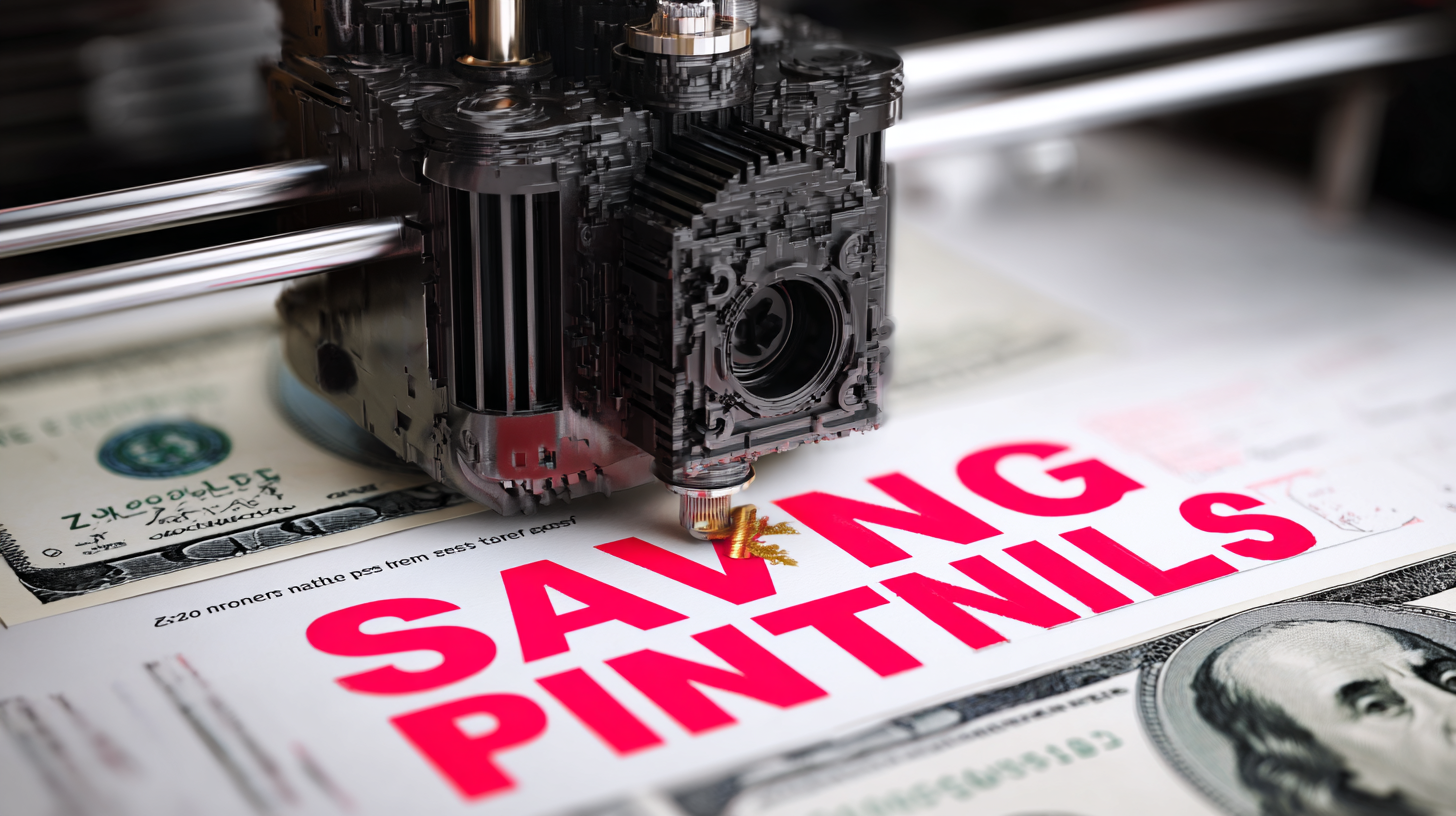Maximize Your Savings with 5 Essential Tips for After Sales Service and Maintenance Costs in Best 3D Printing
In the rapidly evolving world of 3D printing, effective after-sales service and maintenance strategies are paramount to maximizing savings and ensuring the longevity of investments. According to the Wohlers Report 2021, the global 3D printing market is projected to reach $82.07 billion by 2026, underscoring the increasing reliance on this technology across various industries. However, without a robust maintenance plan, companies can face escalating costs that can significantly erode their savings. Studies indicate that companies that prioritize post-purchase support can reduce operational costs by up to 30%, making it vital to adopt best practices in after-sales service. This blog will explore five essential tips that can help businesses optimize their approach to maintenance, ensuring they not only enhance their operational efficiency but also capitalize on the advancements in 3D printing technology.

Understanding the Financial Impact of After Sales Service in 3D Printing
The financial impact of after-sales service in the 3D printing industry is often underestimated. While the initial investment in high-quality 3D printers may seem significant, the ongoing maintenance and support costs can add up quickly, significantly affecting your overall budget. Effective after-sales service not only helps maintain the printer’s performance but also prevents costly downtimes. By incorporating regular maintenance checks and prompt customer service, manufacturers can help users save money in the long run, ensuring they maximize their investment in 3D technology.

Additionally, understanding the nuances of after-sales costs can lead to better financial planning. Users should evaluate service contracts carefully and consider options that provide comprehensive support without hidden fees. Investing in training for staff on proper usage and upkeep of the 3D printers can also mitigate costs associated with repairs and inefficiencies. By prioritizing after-sales service, companies can optimize their operations and enjoy long-term savings, all while enhancing productivity and product quality in the competitive landscape of 3D printing.
Key Factors Influencing Maintenance Costs for 3D Printers
When investing in a 3D printer, understanding the key factors that influence maintenance costs is crucial for maximizing your savings. First and foremost, the type of printer you choose can significantly affect ongoing expenses. Different models come with distinct maintenance requirements, with industrial-grade printers often demanding more specialized upkeep than entry-level options. Researching the specific maintenance schedules and costs associated with your chosen printer can help you anticipate future expenditures.
Additionally, the frequency and quality of usage play vital roles in determining maintenance costs. A printer used daily will likely require more regular servicing compared to one used occasionally. This usage impacts components such as nozzles, belts, and print heads, which may need replacements more often in high-demand scenarios. Moreover, investing in quality materials can decrease wear and tear on the machine, ultimately lowering long-term maintenance expenses. By keeping these factors in mind, you can make informed decisions that extend the life of your 3D printer while keeping costs in check.
Maximize Your Savings with 5 Essential Tips for After Sales Service and Maintenance Costs in Best 3D Printing - Key Factors Influencing Maintenance Costs for 3D Printers
| Maintenance Factor | Impact on Costs (%) | Frequency of Service (Months) | Estimated Cost ($) |
|---|---|---|---|
| Printer Calibration | 20 | 3 | 50 |
| Nozzle Cleaning | 15 | 1 | 20 |
| Software Updates | 10 | 6 | 0 |
| Replacement Parts | 35 | 12 | 200 |
| Lubrication | 20 | 3 | 30 |
Analyzing the Cost-Benefit Ratio of Regular Service Schedules
In the rapidly evolving world of 3D printing, understanding the cost-benefit ratio of regular service schedules can significantly influence overall savings. Maintaining equipment through periodic servicing not only extends the lifespan of printers but also ensures optimal performance. According to a report by SmarTech Analysis, the average downtime due to maintenance issues can cost businesses upwards of $20,000 a day. Therefore, implementing a disciplined maintenance schedule can drastically reduce unexpected expenses.
One essential tip is to prioritize preventative maintenance by following the manufacturer's service recommendations. Regular checks can help catch potential issues before they escalate, ultimately saving both time and money. Furthermore, investing in quality service can yield substantial returns; a study published by Wohlers Associates found that businesses that adhered to a regular maintenance schedule reported a 30% reduction in overall operational costs.
Another valuable approach is to leverage technology for predictive maintenance. Utilizing sensors and software can help forecast necessary maintenance before breakdowns occur, leading to more effective budgeting and resource allocation. These strategies, when employed thoughtfully, can turn maintenance costs into a strategic advantage in the competitive 3D printing landscape.
Maximize Your Savings with Maintenance Cost Analysis of 3D Printing
Maximizing Printer Longevity: Essential Maintenance Practices
Maintaining your 3D printer is crucial for maximizing its longevity and ensuring the quality of your prints. A study by SmarTech Analysis reveals that proper maintenance can extend printer life by up to 30%, significantly reducing the costs associated with repairs and replacements. Regularly cleaning the nozzle, calibrating the printer, and updating firmware can help maintain optimal performance, allowing users to avoid interruptions in their production schedules.

Another essential practice is the use of high-quality materials. According to a report from 3D Insider, low-grade filaments can cause clogs and damage to the extruder, leading to costly repairs that could have been avoided with better quality supplies. Additionally, utilizing preventive maintenance schedules—such as regular inspections and parts replacement—has been shown to decrease the likelihood of unexpected failures by as much as 50%. By incorporating these essential maintenance practices into your routine, you can significantly enhance the performance and lifespan of your 3D printer, ultimately maximizing your savings in the long run.
Leveraging Warranty and Service Plans to Reduce Overall Expenses
When it comes to 3D printing, managing costs associated with after-sales service and maintenance is crucial for maximizing your savings. One of the most effective strategies is to leverage warranty and service plans. Many manufacturers offer comprehensive plans that cover everything from routine maintenance to unexpected repairs. By investing in these plans, not only can you mitigate the high costs of potential issues, but you also gain peace of mind knowing that your printer is supported by professionals.
Additionally, understanding the details of your warranty can help you make informed decisions about repairs and upkeep. For instance, if a printer component fails, knowing what's covered under the warranty can save you significant expenses. Furthermore, consider the option of extended service agreements. While they may appear to be an added expense upfront, they often provide valuable long-term savings, especially in professional settings where continuous operation is essential. By strategically utilizing these service options, you can ensure that your 3D printer remains in optimal condition while reducing overall maintenance costs.